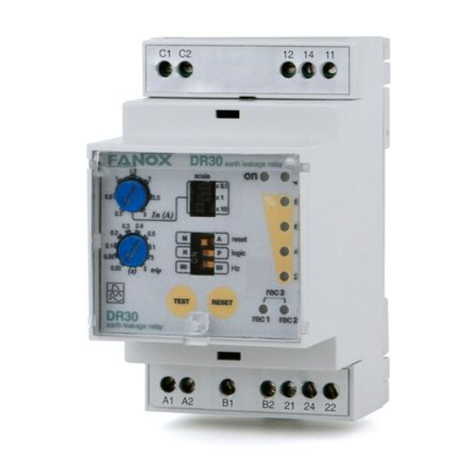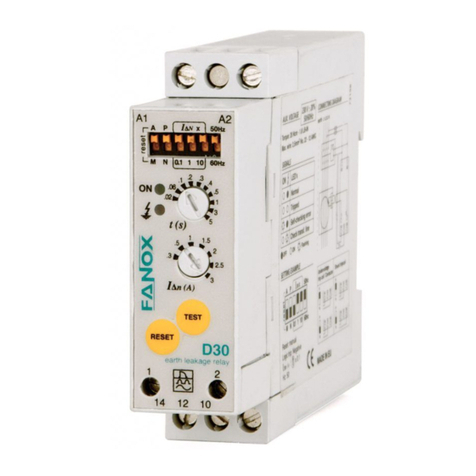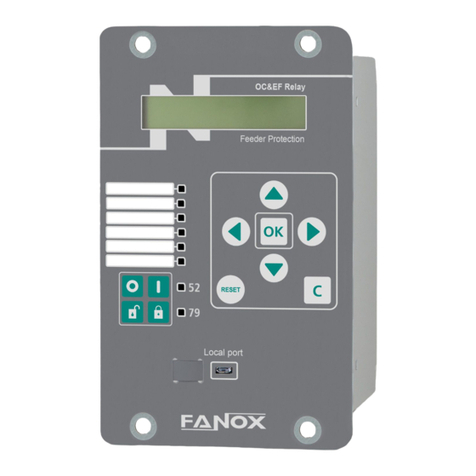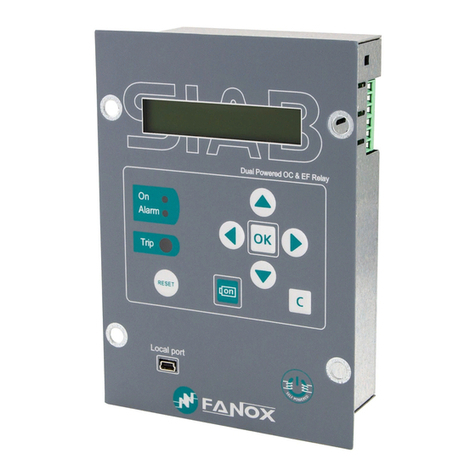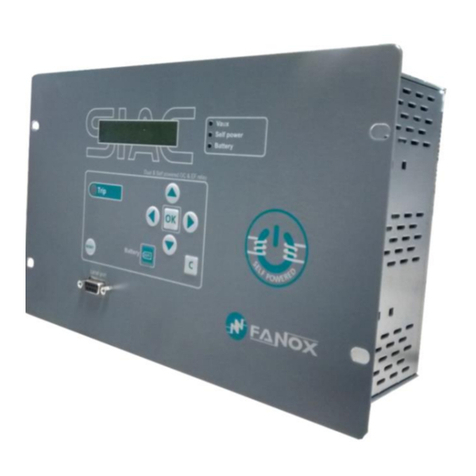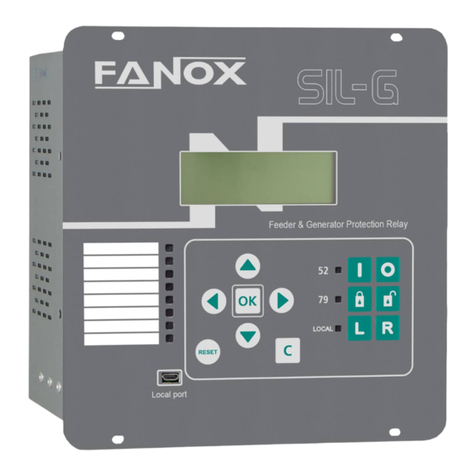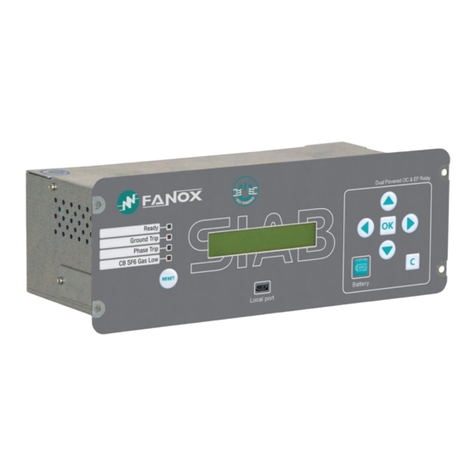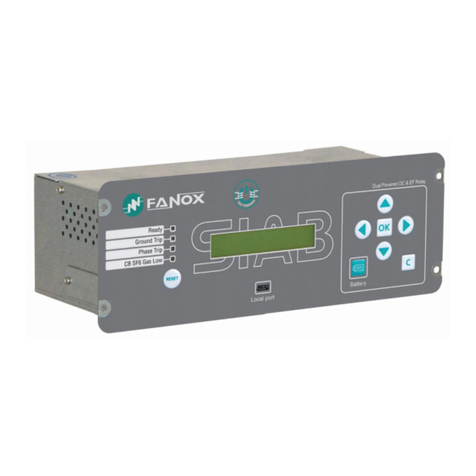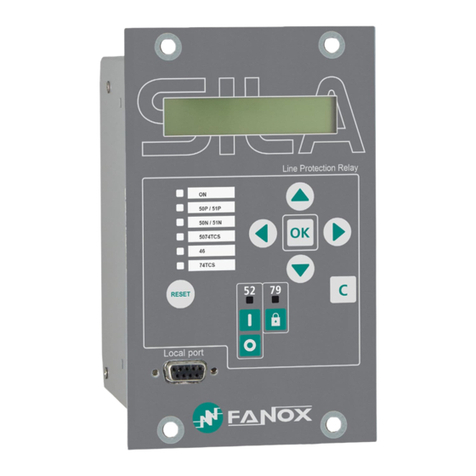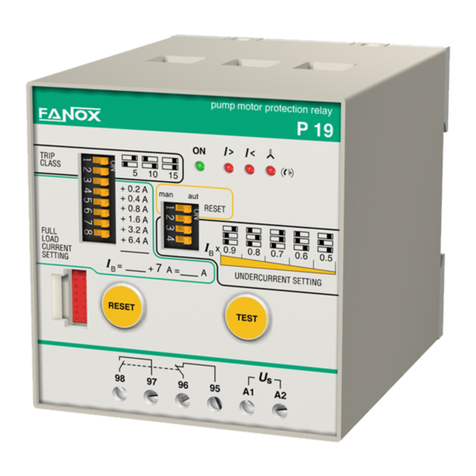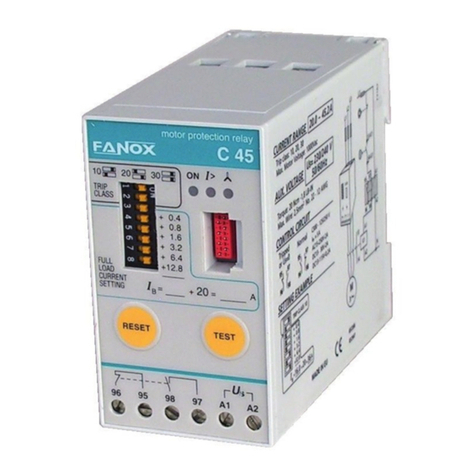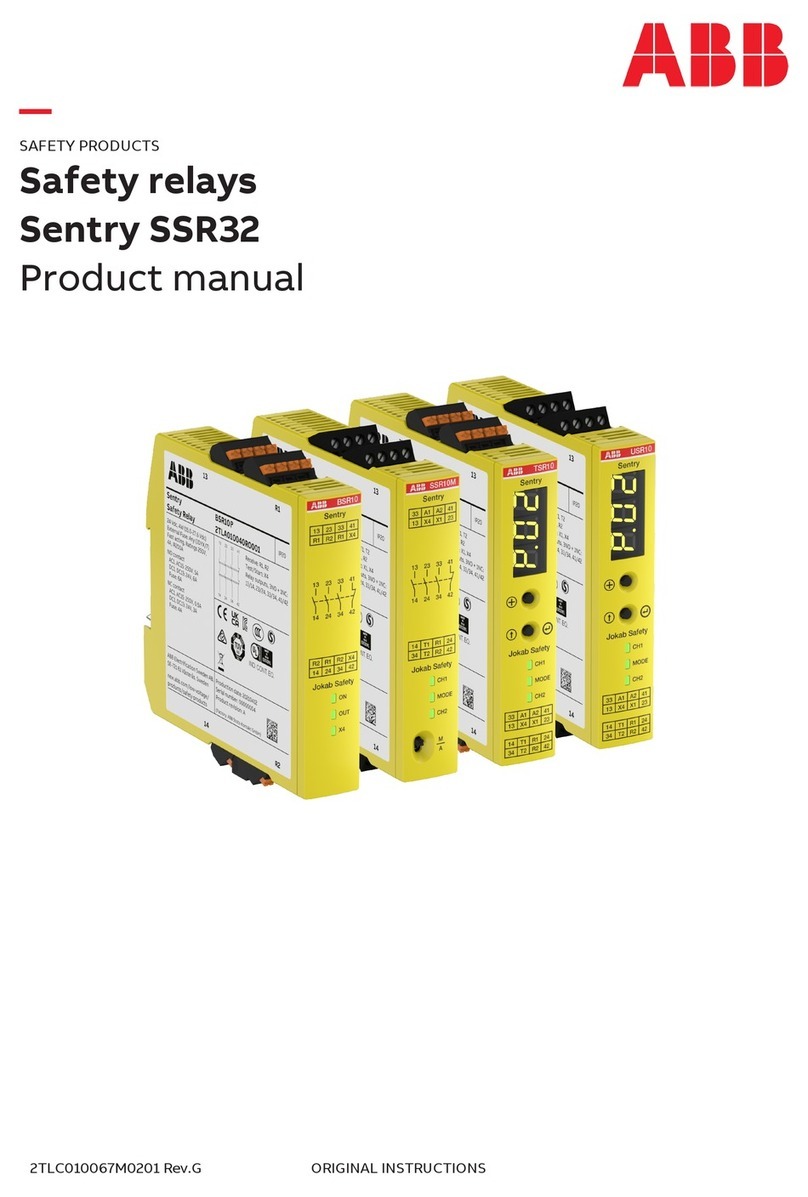www.fanox.com SIAFxxxxxxxxxxx_Rev. 01 2/32
1......RECEPTION & INSTALLATION..........................................................................................3
1.1. Relay unpacking.............................................................................................................3
1.2. Relay verification............................................................................................................3
1.3. Powering the relay up with kitcom............................................................................... 4
1.3.1. Keypad & LCD .............................................................................................................5
1.3.2. Test menu....................................................................................................................5
1.4. Relay installation............................................................................................................ 6
1.5. Relay rear part ................................................................................................................ 6
1.6. Connection diagrams.....................................................................................................7
2......USER INTERFACE..............................................................................................................8
2.1 Relay front part............................................................................................................... 8
2.2 LED Indicators................................................................................................................8
2.3 How to install SICOM Software.....................................................................................8
2.4 Setting-up the session: Password and access levels................................................9
3......FUNCTIONAL DIAGRAM ....................................................................................................9
4......SELECTION & ORDERING CODES ................................................................................. 10
5......TECHNICAL SPECIFICATION.......................................................................................... 11
5.1 IEC60255-151 Curves...................................................................................................15
5.2 IEEE Curves..................................................................................................................16
6......PROGRAMMABLE LOGIC CONTROL (*)........................................................................17
7......FLOWCHART (EXAMPLE)................................................................................................19
7.1 Test menu......................................................................................................................19
7.2 Direct Access................................................................................................................20
7.3 Menus............................................................................................................................21
7.3.1 Measurements menu......................................................................................................21
7.3.2 States menu ...................................................................................................................22
7.3.3 Settings menu ................................................................................................................23
7.3.4 Events menu...................................................................................................................25
7.3.5 Counters menu...............................................................................................................26
7.3.6 Commands menu...........................................................................................................26
7.3.7 Fault reports menu.........................................................................................................27
8......COMMISSIONING..............................................................................................................28
8.1 Thermal resistance.......................................................................................................28
